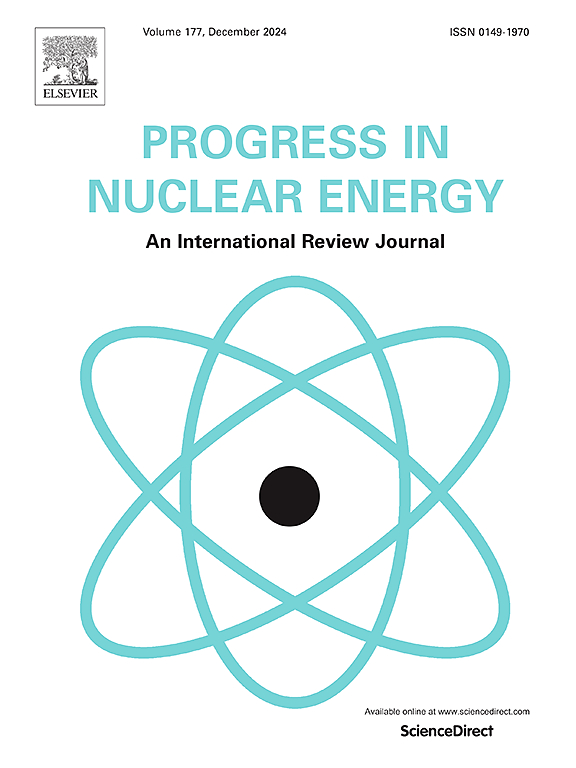Feasibility of using thermoelectric generators to power monitoring platforms of SNF canister internal conditions
IF 3.3
3区 工程技术
Q1 NUCLEAR SCIENCE & TECHNOLOGY
引用次数: 0
Abstract
This paper investigates the feasibility of placing Thermoelectric Generators (TEGs) within spent nuclear fuel dry storage systems to generate electrical power for a wireless monitoring platform of canister internal conditions. This work aims to optimize the placement, dimensions, and thermal properties of the TEGs to maximize the amount of harvested power. Three-dimensional computational fluid dynamics simulations are conducted to optimize TEGs placed within a NUHOMS 61-BT canister stored inside an HSM overpack. Two TEG thicknesses, various locations within the canister, and two different emissivity values are investigated to determine the optimal configuration. The conversion efficiency of the TEGs is assumed to be temperature-dependent, and two TEG figures of merit (1 and 2) are considered. The electric power output of the TEGs and the frequency between measurements are determined for up to 50 years of storage. The results showed that for a canister with an initial total heat generation of 18.3 kW (at 0 years of storage) and a TEG surface area of 0.32 m2, the TEGs, with a value of 1, generate up to 66.10 mW of electric power. At 50 years of storage, they generate 8.85 mW. Assuming an energy consumption of 10.12 J for the wireless monitoring platform, a surface area of 0.1 m2 is required to achieve a time between measurements of 8 min at 0 years of storage and 60 min at 50 years of storage.
求助全文
约1分钟内获得全文
求助全文
来源期刊

Progress in Nuclear Energy
工程技术-核科学技术
CiteScore
5.30
自引率
14.80%
发文量
331
审稿时长
3.5 months
期刊介绍:
Progress in Nuclear Energy is an international review journal covering all aspects of nuclear science and engineering. In keeping with the maturity of nuclear power, articles on safety, siting and environmental problems are encouraged, as are those associated with economics and fuel management. However, basic physics and engineering will remain an important aspect of the editorial policy. Articles published are either of a review nature or present new material in more depth. They are aimed at researchers and technically-oriented managers working in the nuclear energy field.
Please note the following:
1) PNE seeks high quality research papers which are medium to long in length. Short research papers should be submitted to the journal Annals in Nuclear Energy.
2) PNE reserves the right to reject papers which are based solely on routine application of computer codes used to produce reactor designs or explain existing reactor phenomena. Such papers, although worthy, are best left as laboratory reports whereas Progress in Nuclear Energy seeks papers of originality, which are archival in nature, in the fields of mathematical and experimental nuclear technology, including fission, fusion (blanket physics, radiation damage), safety, materials aspects, economics, etc.
3) Review papers, which may occasionally be invited, are particularly sought by the journal in these fields.
 求助内容:
求助内容: 应助结果提醒方式:
应助结果提醒方式:


